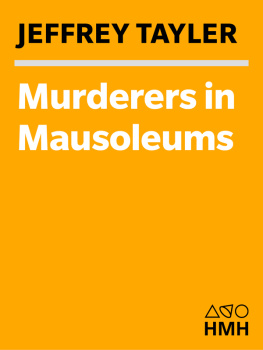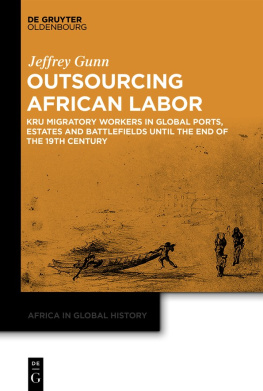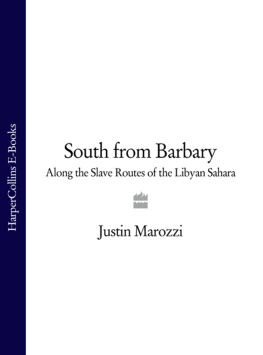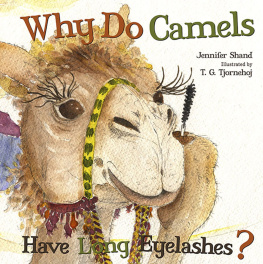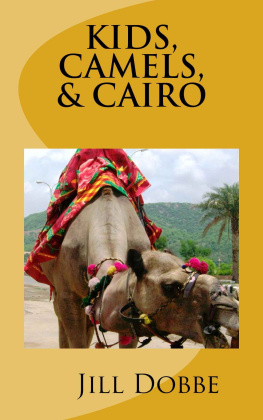Copyright 2003 by Jeffrey Tayler
All rights reserved
For information about permission to reproduce selections from this book, write to Permissions, Houghton Mifflin Harcourt Publishing Company, 215 Park Avenue South, New York, New York 10003.
www.hmhbooks.com
The Library of Congress has cataloged the print edition as follows:
Tayler, Jeffrey.
Glory in a camels eye: trekking through the
Moroccan Sahara / Jeffrey Tayler.
p. cm.
ISBN 978-0-618-49222-0
1. SaharaDescription and travel. 2. Tayler, JeffreyJourneysSahara. I.Title.
DT 333. T 393 2003 916.4804dc21
2002027611
e ISBN 978-0-544-27731-1
v1.0813
Note: To protect the privacy of certain people in this book, a few names and minor identifying characteristics have been changed.
All quotes from the Quran are taken from Arthur J. Arberrys 1993 translation, Oxford World Classics edition.
To my wife, Tatyana
Cette vie est un hpital o chaque malade est possd du dsir de changer de lit. (This life is a hospital where every patient is possessed by a desire to switch beds.)
CHARLES BAUDELAIRE
Note on Transliteration
Owing to the French colonial past, a tradition persists in Morocco of transliterating Arabic place names into the Latin alphabet following the French system, which consists in little more than employing maddeningly inconsistent conventions of orthography to produce divergent spellings for the same sounds, as a glance at road signs and maps in Morocco will tell the befuddled (and frequently off-course) motorist. To wit, the name of the valley down which I traveled has been variously written as Dra, Draa, Dra (the commonest French version, and the one used in Morocco), Dra, Dira, and Draa. The pronunciation is the same: d followed by a rolled r, the retching laryngeal sound of the Arabic letter ain, and finally the short vowel a. For ain (and the glottal-stop diacritical mark, hamza) there are no English phonetic equivalents, but they are often represented by an apostrophe, a practice I have followed here. In writing the name of the valley, I have opted for Dra, since it is the version the Moroccans themselves use.
If accepted English versions exist for other place names I have used them, or I have used the conventional Frenchwhichever is simplest, commonest, and most accurate. (If the conventional French is wrong, or convoluted, I have replaced it with a corrected English version.) The Michelin maps of North Africa have served as my French standard. If there is no accepted French or English spelling, I have transliterated place names using a simplified English system, ignoring differences between long and short vowels and using apostrophes for ain and hamza. I have thus preferred the English wadi to the French oued as a transliteration for the Arabic word for seasonal riverbed. For personal names I have reproduced the transliterations Moroccans themselves use. Thus, for the king of Morocco (and other Moroccans) I write Mohammed, but the name of the prophet of Islam appears as Muhammad, the most accurate rendition of the Arabic in the Latin alphabet.
I have transliterated the names of Dra tribes and peoples following simplified English conventions, and in most cases used the Arabic pluralas in Ruhhal (the singular is Rahhal); Arib (the singular is Aribi); and Haratin (the singular is Hartani). For the Arabic words appearing in the text I have chosen to reflect the Moroccan colloquial pronunciation if the word belongs to dialect, and the classical Arabic pronunciation if it does not. Finally, I have used the English s plural where Arabic broken plurals would be puzzling or incomprehensible for readers without a knowledge of Arabic.
I ask the readers indulgence for any inconsistencies that may occur.
Prologue
A Long Way from Home
W ADI SASI , the Moroccan Sahara. A scorching wind is driving a blinding assault of sand and salty dust off the dead lake, over the blackened, basalt-shard steppes and scattered thorny acacias above it, shrouding the looming, shark-tooth buttes of the distant Madwar mesa in tawny brown and ash gray. My one-humped Arabian camel is couched on the cracked earth, famished and braying with exhaustion, refusing to rise, no matter how hard I tug on his rein. Shouting commands drowned out by the wind, Mbari, one of my two Bedouin guides, kicks his camel in the rear. The camel, encrusted in dust, baring his yellow teeth and bellowing, struggles to stand, but his lame leg gives way, and he collapses. Guf! Guf! Mbari yells, kicking him again and again. Finally he clambers to his feet.
We turn our eyes to Hassan, my other guide and the leader of our expedition, who has managed to rouse his weary camel and is now walking away from us into the whirling clouds of dust. He is tugging his camel by a rope looped through a hole bored into its left nostril, which stretches like an ever more tenuous rubber band. Hassan does not look back, for it is the habit of the Bedouin to face ahead when on the move, lest they intrude on the bathroom activities of fellow tribesmen.
I choke on the blowing sand and grow dizzy from the heat. I slump to the earth beside my camel and cough up a ball of grit. Mbari, also stricken by the heat, clutches his turbaned head and leans on his camel. Shouting over the wind, I ask him how hes doing.
Praise be to God! he yells. How are you?
Praise be to God! I croak, inhaling more sand and turning away to retch.
We are both happy: we have only three hundred miles of desert left to cross.
Other Lived to Lead
The Road to the Dra Valley
I N 1986, while in graduate school writing a masters thesis on famine in the Soviet Ukraine, I discovered two books that pointed me toward transformational peregrinations in the Arab world. The first was Wilfred Thesigers Arabian Sands, the great British explorers account of his postwar travels on foot and by camel with Bedouin tribesmen in the Empty Quarter of the Arabian Peninsula. Though hired by the Middle East Anti-Locust Unit to search out locust breeding grounds, Thesiger pursued a personal quest while in Arabia, a quest intimately related to the nomads with whom he lived: he hoped to find the peace that comes with solitude, and among the [Bedouin], comradeship in a hostile world. The spirit of the Bedouin, he wrote, lit the desert like a flame. Traversing much of Oman and Saudi Arabia in their company, he at first felt like an uncouth and inarticulate barbarian, an intruder from a shoddy and materialistic world. So poor were the Bedouin that they wore only smocks, loincloths, and daggers, yet they never stole from him. Indeed, they proved themselves paragons of desert virtue, and, during the five years he spent roaming the sands as their guest, they became his closest friends. Thesiger emerged from the Empty Quarter hardened by heat, hunger, thirst, and tribal raids, and forever after felt himself a stranger in civilized company. He had, in sum, found what he was looking for among the Bedouin, and it had transformed him.
When I read Sands, I was studying Arabic, having had an inkling that adventureanother life, evenawaited me in the Arab world. Sands introduced me to the Bedouin, who were masters of terrain in which one needed stamina and courage to survive. I read and reread the book, dreaming of journeys in the Empty Quarter, but Arabia had changed much since Thesigers day, as he himself had written. In the 1970s he had revisited his old haunts and found them an Arabian nightmare of oil money and skyscrapers, of Bedouin who had abandoned their camels for Land Rovers. Sands was really an elegy, a travelogue that would, he hoped, remain a memorial to a vanished past, a tribute to a once magnificent people.
Next page

